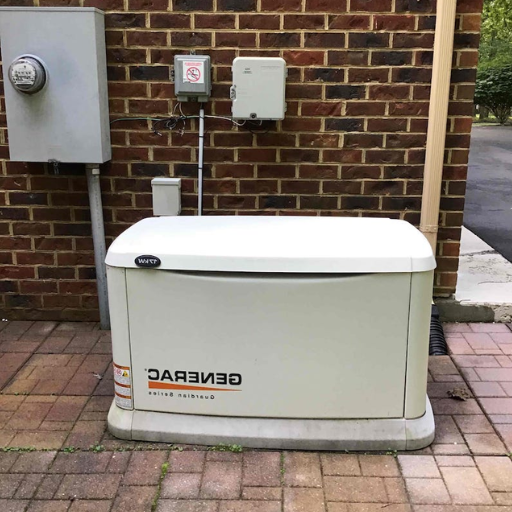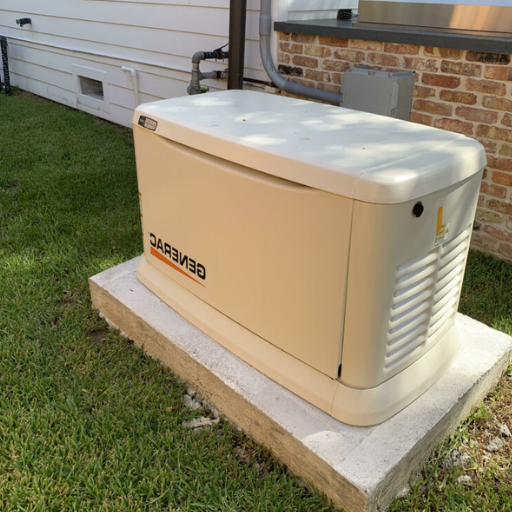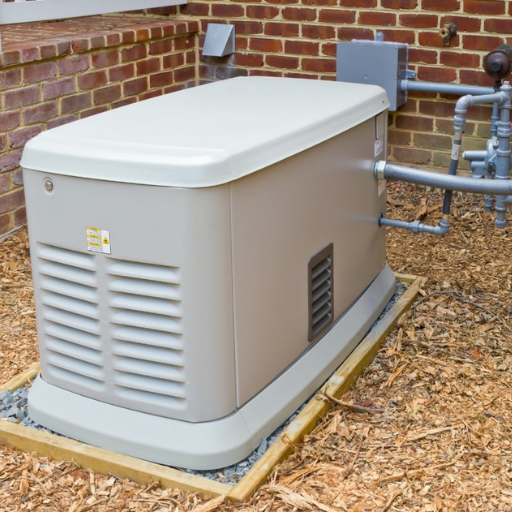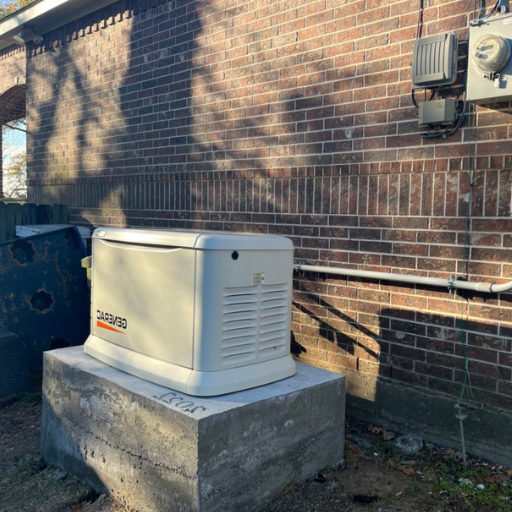Power outages have a peculiar way of halting life’s daily routines. Electricity plays a critical role in powering appliances, devices, and lights. Consequently, at this time, home standby generators act as an efficient power backup for your home to provide seamless service during outages. But what about installing one? If you have been considering installing home generators but are daunted by the installation process, remember you are not alone. This guide walks you through installing a home standby generator by ensuring each critical component is understood and the task is completed safely and effectively. Whether you are interested in learning about the advantages of these generators or a homeowner wanting to ensure their loved ones are safe, this blog will aid you in gathering valuable information to guide the decisions you plan to make.
How Does a Standby Generator Work?

This is how a standby generator operates: it provides a backup power flow to your house whenever a utility outage occurs. It’s equipped with your home electrical system and uses fuel, usually natural gas or propane, as its energy source. Standby generators detect power loss through their fuel-tended sensors. They switch on and are electrically self-sustaining by transferring the load onto themselves, securing an unending energy flow. They automatically turn off, and the system returns to using power from the utility after power is reinstated. All of this is done effortlessly, and standby generators need no human help, making them an ideal choice for seamless power supply.
How Does a Standby Generator Work?
Various fuel sources such as gas, propane, and diesel can be used to power standby generators. They are equipped with sensors that monitor charge levels and disconnect the power supply during outages, enabling the automatic supply to run. Equipped to your home’s fuel and electrical supply, they get automatically powered during outages. The power system features a standby generator that is activated whenever power is cut off. Moreover, it facilitates smooth supply transfer and load sensing. The whole sequence usually lasts only for several seconds, so manual assistance isn’t needed.
Benefits and Applications
During storms and frequent power outages, standby generators offer significant advantages to households in affected areas. They are also critical for industries such as healthcare, data centers, and manufacturing, where constant power is essential for operations. Standby generators for home use range from 7000 to 24000 watts, while larger commercial systems can produce hundreds of kilowatts. Recent data indicates that the average power outage in the U.S. is 2-4 hours, although severe weather can lead to outages lasting days. A standby generator prevents heating, cooling, lighting, and even life-saving medical equipment from failing in such situations.
Latest Advancements in Standby Generators
Modern standby generators have made significant advancements. They now come equipped with remote monitoring and control features via mobile apps. Users receive alerts regarding system diagnostics, fuel levels, and maintenance reminders. Furthermore, recent advances in energy efficiency have made new generators consume less fuel than older models, offering long-term savings. Some systems are also integrated with solar panels, making them hybrids to encourage the reduction of fossil fuel use.
Buying a standby generator guarantees an uninterrupted power supply during unforeseen power outages, ensuring the optimal safety and utility of your home or business.
Understanding the Role of an Automatic Transfer Switch
An Automatic Transfer Switch (ATS) is pageantically indispensable in the standby power system, providing instantaneous changeover from one power supply source to another in case of an outage. Primary activities include sensing power losses and automatic discharge of the electric energy from its primary source – the utility grid – to the supplementary system, the generator, and switching back to the primary source when the balance energy is available. So, during working hours, your home or business results in Zero Downtime, making life easier, safer, and convenient. Automatic Transfer Switch comprises: below are the key details and functionalities of an Automatic Transfer Switch:
- Power Monitoring
ATS tracks the utility grid electrical supply in real time until there are no downtimes, voltage dips, or interruptions of any kind. Pulses of power disconnection, even total blackouts, can be just as easily gauged.
- Automatic Switch Activation
Suppose ATS picks signals about a collapse in primary power-fed systems. In that case, it immediately goes into action with a pre-engaged strategy of rocking the load into the set generator with Zero Manual Engagement.
- Zero Lag Power Swap
The switch ensures zero lag in the transfer of power, with instantaneous supply to critical systems such as heating, medical equipment, data, and remotely controlled devices.
- Protection Against Electrical Surges
The ATS has protective mechanisms for switching processes to avoid surges or overloading, which may damage electrical devices.
- Remote Monitoring and Control
Today, most ATS units can monitor and control the device remotely, allowing users to manage the system and receive notifications on their phones or other smart devices.
An Automatic Transfer Switch uses these tools to aid in the effectiveness and reliability of your backup power solution.
Benefits of Having a Whole-House Generator
| Key Benefit | Description |
|---|---|
|
Uninterrupted Power Supply |
Automatically restores power during outages. |
|
Protects Essential Appliances |
Keeps refrigerators, HVAC, and medical devices running. |
|
Prevents Food Spoilage |
Maintains refrigeration during power loss. |
|
Enhances Safety and Security |
Powers security systems and lighting. |
|
Avoids Water Damage |
Keeps sump pumps operational to prevent flooding. |
|
Prevents Frozen Pipes |
Maintains heating to avoid pipe bursts. |
|
Reduces Grid Dependency |
Provides reliable power during grid failures. |
|
Increases Property Value |
Adds resale value to your home. |
|
No Manual Operation Needed |
Automatically activates without manual setup. |
|
Supports Work-from-Home Needs |
Ensures uninterrupted internet and power. |
How do you install a standby generator at home?

Setting up a standby generator at home requires specific processes to be completed for a safe and efficient system.
- Choosing the Right Generator
Purchase a generator that can adequately supply power to your household. Think of the essential appliances and systems that need power during an outage.
- Pick a Location
Position the generator outside on even and solid ground, away from windows, doors, and vents. To comply with local building regulations, generators must be a certain distance away from your home’s perimeter.
- Obtain the Permits
Ensure compliance with local laws to secure the necessary permits related to installation. They may have rules on where a generator can be placed and how it must be wired.
- Install a Transfer Switch
Hire an electrician to connect the generator transfer switch to the house’s electrical system.
- Perform Electrical Connections
The generator’s transfer switch requires the attention of a professional electrician. Proper wiring connections ensure an adequate supply of electricity.
- Test the System
After installing all components, execute a functionality check on the generator and the transfer switch. Pay attention to how the generator is powered and operated.
Hiring an expert to conduct the installation is advisable to observe safety standards and local legislation.
Choosing the Right Generator System for Your Needs
To choose the best generator system for my home, I first assess my home appliances’ size and power requirements. I then consider whether I require a portable generator for temporary use or a standby generator for long-term use. I also consider fuel types like gas, propane, or diesel, considering what is available and affordable. Lastly, I look at the maintenance requirements and costs to make the most practical decision.
Steps Involved in Standby Generator Installation
| Step | Description |
|---|---|
|
1. Assess Power Needs |
Determine essential appliances to power. |
|
2. Choose Generator Type |
Select size, fuel type, and location. |
|
3. Site Preparation |
Level ground and install a concrete pad. |
|
4. Obtain Permits |
Secure necessary local permits for installation. |
|
5. Install Transfer Switch |
Connect switch to shift power during outages. |
|
6. Connect Fuel Source |
Link generator to natural gas or propane. |
|
7. Electrical Integration |
Connect generator to home’s electrical system. |
|
8. System Testing |
Test generator functionality and safety. |
|
9. User Training |
Learn operation and maintenance basics. |
|
10. Schedule Maintenance |
Plan regular checks for optimal performance. |
The Role of an Electrician in Generator Installation
The safety protocols and proper installation of standby generators are secured through the work of qualified electricians. Their professionalism guarantees that all electrical cods are observed, proper system installation is done, and everything functions optimally. Below are some of the essential duties and responsibilities an electrician is involved with throughout the installation of a generator:
- Site Evaluation and Preparation
Electricians assess the chosen installation location to determine the most optimal area for the generator. They also consider the distance to the electric panel, fuel access, ventilation clearance, and other clearances that the unit may require.
- Integration of the Electrical Panel
They connect the generator to the house’s electrical circuits. A transfer switch is customized and added to enhance power flow control from the generator to the utility during outages.
- Observance of Essential Local and National Code Standards
The electrician does all the work to ensure they follow the zone and national codes for electrical work standards. Following local standards helps avoid safety hazards, legal suits, and insurance challenges.
- Load Testing and Verification of Components of Yep System
Electricians perform post-installation testing to validate the effectiveness of the generator’s functionality. They also conduct load and functionality checks on the generator’s transfer switch and guarantee that the load requirement is sufficient.
- Configuring Continuous Maintenance
Electricians inform users about do-it-yourself upkeep tasks or manual servicing scheduling, which helps keep the generator operational and proficient and increases longevity.
Employing such experts guarantees an effective generator installation that is safe and meets the house’s specific needs.
What is the Cost to Install a Home Standby Generator?

The average cost of installing a home standby generator depends heavily on its size, brand, and complexity. Generally, homeowners looking to install a standby generator should prepare 5,000 5,000 $ 10,000 for a complete installation, including the generator’s cost (3,000to3,000to6,000) and installation fee (2,000to2,000to4,000). More advanced systems or extensive electrical upgrades might require higher costs than expected; seek quotations from licensed professionals to get a quote that suits your needs.
Factors Affecting Installation Costs
The major contributors to the overall installation costs of the standby generator are its size and type, the local labor rates, the property’s electrical system enhancements, and the complexity of the installation.
Budgeting for a Whole-House Generator
| Key Point | Details |
|---|---|
|
Average Cost |
$5,000–$25,000 (varies by size, brand, etc.) |
|
Installation Cost |
$1,500–$5,000 (depends on complexity) |
|
Fuel Types |
Natural gas, propane, diesel, solar, gasoline |
|
Fuel Costs |
$500–$21,000/year (varies by type) |
|
Generator Size |
1–48 kW (cost increases with size) |
|
Maintenance Cost |
$150–$300/year (routine checks, oil changes) |
|
Lifespan |
15–20 years with proper maintenance |
|
Permits |
$50–$200 (varies by location) |
|
Additional Features |
Automatic transfer switch, remote monitoring, cold weather kits |
|
Home Value Impact |
Can increase property value |
Can a Portable Generator Be Used Instead?

A portable generator can undoubtedly be an alternative, but it serves best during emergencies or as a short-term solution, rather than a long-term replacement for a residential generator. Although portable generators can power equipment necessary for daily functioning, they can’t power other appliances in a house simultaneously. Moreover, they need to be set up, fueled, and properly connected, posing multiple safety risks. A whole-house generator is ideal for power that is required consistently and over long periods due to its efficiency and dependability.
Pros and Cons of Portable Generators
| Aspect | Pros | Cons |
|---|---|---|
|
Cost |
Affordable compared to standby generators. |
Requires ongoing fuel and maintenance costs. |
|
Mobility |
Easy to move and use in multiple locations. |
Heavy and challenging to transport for some. |
|
Power Supply |
Provides emergency power for essentials. |
Limited capacity; cannot power entire homes. |
|
Setup |
No installation required; quick to deploy. |
Manual start and setup needed during outages. |
|
Fuel Options |
Runs on gasoline, diesel, or propane. |
Fuel storage and refueling can be inconvenient. |
|
Noise |
N/A |
Can be noisy and disruptive in residential areas. |
|
Safety |
N/A |
Emits carbon monoxide; requires outdoor use. |
|
Environmental |
N/A |
Contributes to carbon emissions. |
Comparing Portable Generators and Standby Generators
| Aspect | Portable Generators | Standby Generators |
|---|---|---|
|
Cost |
$500–$4,000 |
$5,000–$15,000 (including installation) |
|
Power Output |
1,500–10,000 watts |
20,000–50,000+ watts |
|
Fuel Source |
Gasoline, propane |
Natural gas, propane |
|
Runtime |
Limited by fuel tank size |
Continuous with fuel supply |
|
Installation |
No installation required |
Requires professional installation |
|
Operation |
Manual start and setup |
Automatic start during outages |
|
Mobility |
Portable and easy to move |
Fixed in one location |
|
Noise Levels |
Noisy during operation |
Quieter with insulated covers |
|
Best For |
Temporary or occasional outages |
Frequent or long-term outages |
|
Maintenance |
Regular refueling and upkeep |
Minimal, periodic professional checks |
What to Consider Before Generator Installation?

The following points should be considered when installing a generator:
- Electrical Requirements: Assess the wattage required to power vital appliances and systems during an outage. This will help you choose the correct generator size.
- Fuel Type: Consider the fuels available, such as gasoline, diesel, propane, and natural gas, and evaluate their availability and storage requirements.
- Installation Location: Select an outdoor location that is adequately ventilated for installation to avoid the accumulation of carbon monoxide and any local safety requirements.
- Noise Levels: Check if the generator produces noise above the permissible levels in residential areas. Verify that the generator does not contravene local noise restrictions in all other areas.
- Budget: Assess the payment configuration of each device’s purchase, installation, and relaying power or other fuels (sustenance).
- Maintenance: In addition to periodic inspections, consider the level of fuel control needed and the dependability of the devices’ operation over periods of inactivity.
Considering all of these factors will assist you in selecting a generator that adequately addresses your installation needs.
Choosing Between Natural Gas and Propane
Consider the specifics of each fuel’s availability, efficiency, cost, and environmental considerations when deciding between natural gas or propane for your generator’s fuel. Both fuels have advantages and limitations based on your specific situational needs, which may shift the balance in your choice.
- Availability
If your home or business is connected to the pipeline network, natural gas should be your preferred option because it is usually delivered through pipelines. Propane is more flexible because it can be delivered in portable cylinders or stored on-site in dedicated tanks. Since natural gas infrastructure is not available everywhere, propane is more reliable.
- Energy Efficiency
Propane offers greater energy per unit than natural gas. For instance, one cubic foot of propane generates approximately 2,516 BTUs while one cubic foot of natural gas only generates about 1,030 BTUs. This makes propane more energy-dense since less fuel is required to produce the same power. Natural gas systems, however, enjoy uninterrupted supply, which eliminates fuel monitoring and refilling.
- Cost Comparison
Natural gas is usually cheaper than propane on a per-unit scale due to its high demand and developed infrastructure. As of late, in the United States, natural gas is about 15 dollars for every 1000 cubic feet, while propane is estimated to be around 2.70 dollars per gallon (which is equivalent to approximately 91,000 BTUs). In high-usage scenarios, achieving those savings may be substantial when considering the lower-priced natural gas, even if propane is more energy efficient in the long run.
- Environmental Impact
Propane and natural gas are relatively cleaner-burning fuels than gasoline or diesel. While that is true, propane is a byproduct of natural gas processing and petroleum refining, which makes it a less “pure” fuel source. When comparing the two, natural gas wins by yielding less carbon dioxide for every unit of energy burned. For example, burning natural gas emits around 117 pounds of CO₂ for every million BTUs, while propane emits roughly 139 pounds.
- Storage and Handling
Natural gas is delivered through pipelines, so there is no requirement for on-site storage. This can be advantageous for those already connected to a pipeline, as it reduces setup and maintenance work. In contrast, propane requires setting up tanks, which come at a cost but offer the flexibility of stored fuel when not needed.
Fuel accessibility, budget limits, and eco-friendly goals dictate the choice between nitrogen gas and propane. Propane will favor off-grid reliability and energy density, while users in areas with stable pipelines will prefer the value and convenience of natural gas. Regardless, both options efficiently power generators.
Understanding the Gas Line Requirements
To ensure the proper installation of a generator, it is crucial to understand both meeting and not exceeding the requirements set by the relevant authorities regarding safety, fuel efficiency, and local regulations about gas lines. Five factors of utmost importance are as follows:
- Gas Line Diameter Standards
Consult the generator’s specifications and ensure its gas line diameter meets the specified fuel requirements while preventing any pressure drops that could hinder the generator’s performance.
- Gas Line Pressure Requirements
Ensure the gas line upholds the required pressure specified by the manufacturer, which is usually in WC inches. Undesired pressure could damage the gas line or cause inefficient operation.
- Gas Pipeline Material
The gas line should use flexible stainless steel tubing (CSST), black iron, or steel as they are more durable and approved. If the gas line is constructed in a corrosive area, such as outdoors or underground, it should also be made of resistant materials to ensure durability.
- Regulator Adjustment
Additional controls can be added or existing ones adjusted to help sustain the designated pressure level in complex systems. This is especially crucial with propane-powered systems or in cases where a significant change in supply pressure occurs.
- Local Building Codes Regulations
Conduct all installations according to your area’s local building and safety regulations. This includes securing permits and scheduling inspections that guarantee the system meets the standard.
Considering these aspects will help ensure your generator operates safely, efficiently, and by all required laws and regulations.
Evaluate Your Home’s Electrical Needs
Knowing your home’s electrical requirements is necessary to understand whether your generator can support your power requirements during an outage. Begin by assessing the important appliances and devices you use daily, including refrigerators, HVAC systems, lights, medical devices, and other electronics.
Assess the Total Wattage Requirements
Prepare a checklist of your essential appliances, along with their wattage ratings. For example:
- Refrigerator: 600-800W
- Central Air Conditioner (3-Ton): 3500- 4000W
- Electric Water Heater: 4500W
- Television: 100-400W
- Lights (LED bulbs): 10- 20W each
Calculating the total wattage of all appliances gives you the house’s power requirement. Don’t forget the starting wattage as well, as it is commonly higher for elements such as refrigerators or air conditioners.
Peak vs. Continuous Load
These two metrics define the limit a generator can run on, as they are rated at peak (starting) watts and continuous (running) watts. It is ideal to determine if a generator can support the combined load of appliances turning on their peak wattage and sustaining their continuous load for long periods.
Consider alternatives that consume less power.
Switching to energy-efficient appliances and using LEDs can significantly reduce the power needed. For example, ENERGY STAR-certified refrigerators consume about 15% less energy than standard models, increasing the manageability of the generator’s capacity.
Advanced Tools For Energy Management
Specialized online calculators and smart devices offer tailored features unique to your home. Energy monitors, smart plugs, and other modern gadgets let you track the exact energy consumption of each appliance in real time. With these online wattage calculators from Generac or Energy.gov, estimating the size of your generator has never been easier.
With the latest resources, you can effortlessly analyze your generational electrical demands and find a generator that guarantees an uninterrupted power supply during critical times.
References
-
Small Wind Powered Generator (Academia.edu) – Discusses wind-powered generators and their installation for home use.
-
Design of Necessary Installations for Energy Independence (University of Barcelona) – Covers the design and installation of energy systems, including generators, for homes.
-
Statistics and Metrics Generator for Software Installation (Oregon State University) – While focused on software, it provides insights into installation metrics and processes.
Frequently Asked Questions (FAQ)
Q: How is a home standby generator installed?
A: The installation process for a home standby generator involves several steps including selecting the right site, installing a concrete pad or base, connecting the generator to your home’s electrical system, and integrating it with a transfer switch to ensure seamless power during an outage. It is recommended to hire a professional generator installer or electrician to install the generator to ensure safety and compliance with local codes.
Q: How much does it cost to install a standby generator?
A: The cost to install your standby generator can vary greatly depending on factors such as the size of the generator, the complexity of the installation, and any additional work needed on your electrical system. On average, homeowners can expect to spend anywhere from $3,000 to $15,000 for a whole-house generator installation, including the cost of the generator itself and labor.
Q: What size generator do I need for my home?
A: The generator size you need depends on the wattage requirements of your home appliances and whether you want to power your entire house or just essential systems during an outage. A professional can help you calculate your home’s specific needs and recommend the appropriate generator size for your home backup solution.
Q: Can I install my generator myself?
A: While some home improvement enthusiasts may consider installing a generator themselves, it is not recommended. Proper installation requires specific knowledge of electrical systems, utility power connections, and local codes. Hiring a licensed electrician to install the generator ensures safety and compliance.
Q: What happens during a power outage with a standby generator?
A: During a power outage, a standby generator automatically detects the disruption to your home’s utility power and activates to provide electricity to your home. This ensures that your home appliances and critical systems continue to run without interruption.
Q: Do I need a transfer switch for my home generator?
A: A generator with a transfer switch is crucial for safely connecting your backup generator to your home’s electrical system. The transfer switch allows for a seamless transition between utility power and generator power, preventing backfeeding that can be dangerous to repair crews and your appliances.
Q: How long does the installation process take?
A: The installation process for a home standby generator can take anywhere from one to three days, depending on the complexity of the installation and any additional work required on your electrical system. This includes site preparation, electrical connections, and system testing.
Q: Are there specific brands recommended for home generators?
A: Popular home generator brands include Generac, which is known for its reliable standby generators. Other well-regarded brands include Kohler and Briggs & Stratton. It is essential to choose a generator that meets your home improvement needs and budget.
Q: What maintenance does a standby generator require?
A: Regular standby generator maintenance is essential to ensure reliability and longevity. This includes routine oil, filters, battery checks, and periodic professional inspections and servicing. Most manufacturers, like Generac, provide maintenance guidelines specific to their models.







